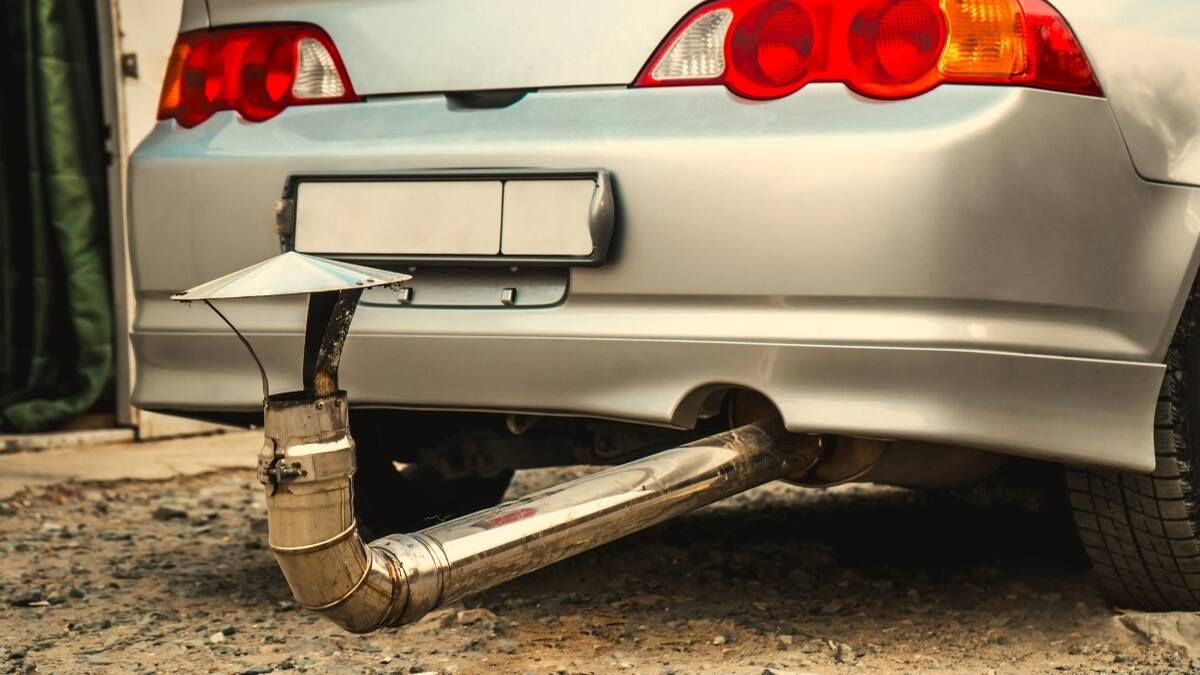I have a decision to make soon, and it is a difficult one: What kind of muffler exhaust system will I install on my rebuilt 1973 360 Ford F-100?
The Sound and the Fury
Choosing a new exhaust system for your car or truck sometimes requires careful consideration. If my truck were a rebuilt original, I would just go ahead and buy a new old stock (NOS) OEM muffler and pipes. However, modifications have transformed it from a 140 HP farm truck to a 340 HP dream machine on the dyno. This means that I will need dual- over the original single-exhaust if I do not want to chip away at the HP any more than I have to.
Then, there is the sound I desire.
A glass pack muffler, also known as a straight-through muffler or a “Cherry Bomb” muffler is well-known for a throaty, deeper (and louder) sound than you will get from most OEM stock muffler systems. While glass pack hybrid style mufflers can reduce exhaust noise to some extent with complex designs and multiple chambers, a straight pipe design is even less effective at noise reduction. But more fun.
When I was a kid, glass pack mufflers were what everyone wanted to put on their vehicles regardless of what level of performance of engine they had under the hood. It just sounded cooler.
Today, I am not a kid any longer, but there is a wild child inside of me screaming to get out. Fortunately, I have a little more common sense…and a wife whom I suspect slips Ritalin in my Nestlé Quik every now and then.
One of the problems of going with The Call of the Wild is that of domesticated suburbia. Many neighborhoods and jurisdictions have regulations regarding the maximum allowable exhaust noise levels, so it's important to ensure that any modifications comply with local laws and regulations.
Before the rebuild, a timing problem backfire split open my original muffler and sent my next-door neighbor in a screaming fit within minutes of pulling into the driveway.
As you can see, my problem is not a simple one.
Muffler Basics
Here's how a typical muffler works after the engine has fired and the 4th cycle is pumping exhaust gases from the engine and enters a muffler designed to operate on the principles of sound wave cancellation and absorption to reduce the noise produced by the engine exhaust.
- Sound Absorption: As the exhaust gases flow through the perforated pipe, they pass through sound-absorbing material. This material absorbs some of the sound energy produced by the engine, reducing the intensity of the exhaust noise.
- Sound Wave Cancellation: Perforations in the pipe and the sound-absorbing material inside the muffler create a series of chambers and barriers that help cancel out certain sound frequencies. When the sound waves produced by the engine travel through the perforated pipe and encounter the sound-absorbing material, they bounce around inside the muffler and interfere with each other, leading to cancellation of certain frequencies. This helps in reducing the overall noise level of the exhaust.
- Increased Exhaust Flow: Compared to traditional chambered mufflers, glass pack mufflers offer less restriction to the flow of exhaust gases because of their straight-through design. This can result in slightly improved engine performance and fuel efficiency.
- Aesthetic Appeal: In addition to their functional benefits, glass pack mufflers are also popular among automotive enthusiasts for their unique appearance and the deep, throaty sound they produce. Many people install glass pack mufflers primarily for the aggressive sound they provide. OEM mufflers are more about meeting engineering requirements and fuel efficiency specs with a quieter sound; Aftermarket mufflers are more about Zoom Zoom.
At Least One Practical Aftermarket Muffler Problem
The genesis of this topic was a recent speedkar99 YouTube channel episode where the host dissects a variety of muffler types and provides an excellent short review that explains how they work.
Follow along with the host as he shows at least one practical aftermarket muffler problem you will likely encounter should you decide to replace your OEM muffler with an aftermarket one. The value of the video is that due to design features/differences, you might change your mind about not going OEM, aside from the host’s advice of being sure to, “Make it quiet enough so that you can get away from your wife on a Saturday night to go hang out with the boys.”
How a Muffler Works
For additional articles related to aftermarket parts, here are three for your consideration:
- Toyota Tacoma Aftermarket Part Warning
- Toyota Hybrid Owner Experience with an Aftermarket Hybrid Battery
- Why You Should Not Fit Original Equipment Tires on Your Car
Timothy Boyer is an automotive reporter based in Cincinnati. Experienced with early car restorations, he regularly restores older vehicles with engine modifications for improved performance. Follow Tim on “Zen and the Art of DIY Car Repair” website, the Zen Mechanic blog and on Twitter at @TimBoyerWrites and Facebook for daily news and topics related to new and used cars and trucks.
COMING UP NEXT: I Almost Bought the Wrong 2024 RAV4
Image source: Deposit Photos





